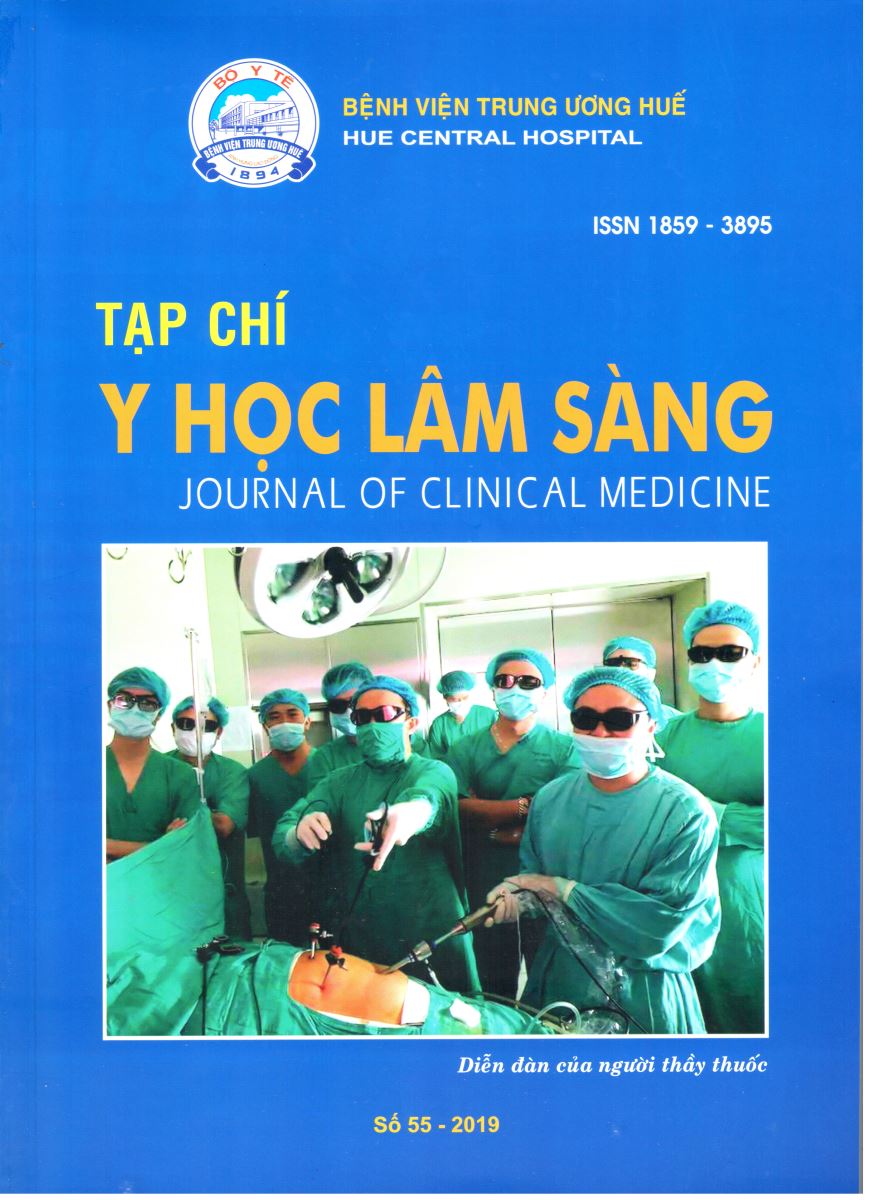Abstract
Objective: Analyze the characteristics and survival rate of some neuroblastoma’s prognotic factors.
Subject: 345 neuroblastoma cases that were diagnosed and analyzed MYCN gene status in National
children’s hospital.
Method: Descriptional study.
Result: Prognostic factors were analyzed including age, stage, histology types, histology prognosis, MYCN
amplification. Neuroblastoma under 1.5 years of age had high rate, 45.5%, ORS 5 years was 79.3%. Age group
1.5 – 5 years and over 5 years showed low survival rate which were 56.8% and 75.1% respectively. Stage L2
reached the highest rate, acounted for 43.5%, when ORS 5 years of stages L1, L2, M, Ms were 92.7%; 62.7%;
33.1%, 75% respectively. Four histological types were Neuroblastoma stroma poor, Ganglioneuroblastoma
nodular, Ganglioneuroblastoma intermix, Ganglioneuroma which acounted for 75.9%, 7%, 5.2%, 11.9%
respectively and ORS 5 years were 62.3%, 72.8%; 100%, 88.7% respectively. Neuroblastoma with unfavorable
/favorable histology were 40.6% and 59.4%, ORS 5 year were 41.5%, 85.9% respectively. Tumor that had
MYCN amplify/non amplify got rate of 20.1%, 79.7%, ORS 5 year were 41.5%, 85.9% respectively.
Conclusion: Prognostic factors need to be carefully analized to have the best treatment result for neuroblastoma children.
Keywords: Prognostic neuroblastoma; Neuroblastoma
References
Brodeur G.M, Maris J.M (2002). Neuroblastoma,
Principles and pratice of Paeditrics Oncology.
Philip A. Pizzo, David G. Poplack, Williams and
Wlkins, pp. 895-937.
Hoàng Ngọc Thạch (2009). Nghiên cứu đặc
điểm hình thái học và một số yếu tố tiên lượng
u nguyên bào thần kinh ở trẻ em. Luận văn thạc
sĩ y học, chuyên ngành Giải Phẫu Bệnh, mã số
72.01.
Susan L. Cohn, Pearson A, London W, et al
(2009). The International Neuroblastoma Risk
Group (INRG) Classification system: an INRG
Task Force Report. J Clin Oncol 27:289-97.
Berstein M.L., Leclerc J.M., Bunin G. et al (1992),
“A Population Base Study of Neuroblastoma
Incidence, Survival and Mortality in North
America”, J Clin Oncol 10, pp. 323-29.
Ross J.A, Severson R.K, Pollock P.H, Robinson
L.L (1996). Childhood cancer in the United
States: a geographical analysis of cases from
the Pediatric Cooperative Clinical Trials Group.
Cancer, 77: 201-207.
Phùng Tuyết Lan (2007). Nghiên cứu phân loại
và nhận xét kết quả điều trị u nguyên bào thần
kinh ở trẻ em tại Bệnh viện Nhi Trung ương
(2002 - 2006). Luận án Tiến sĩ Y học, chuyên
ngành Nhi Khoa, mã số 3.01.43.
Shimada H., Ambros IM., Dehner LP., (1999).
The International neuroblastoma pathology
classification. Cancer, 86 (2), 364-372.
Monclair T, Garrett M. Brodeur, Peter F. Ambros,
et al (2009). The International Neuroblastoma
Risk Group (INRG) Staging System: An INRG
Task Force Report. J Clin Oncol; 27(2): 298–303.
Wen G.H, Yu Y., Wen T., et al (2017). Clinical
and biological features of neuroblastoma and
ganglioneuroblastoma. Oncotaget, 8,23, 37730-
Shimada H, Umehara S, Monobe Y, et al
(2001). International neuroblastoma pathology
classification for prognotic evaluation of pateints
with peripheral neuroblastic tumours. A report
from the children’s cancer group. Cancer, 92,
-2461.
| Published | 01-03-2025 | |
| Fulltext |
|
|
| Language |
|
|
| Issue | No. 55 (2019) | |
| Section | Original article | |
| DOI | ||
| Keywords | Tiên lượng u nguyên bào thần kinh; u nguyên bào thần kinh Prognostic neuroblastoma; Neuroblastoma |

This work is licensed under a Creative Commons Attribution-NonCommercial-NoDerivatives 4.0 International License.
Copyright (c) 2019 Journal of Clinical Medicine Hue Central Hospital

